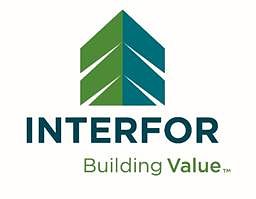
Interfor Bets on Engineered Wood as Forest Industry Shifts Gears
Canadian forestry giant Interfor is pivoting towards mass timber and sustainable practices, navigating fiber challenges and a changing market landscape. Can its strategy build a stronger future?
Interfor Bets on Engineered Wood as Forest Industry Shifts Gears
Vancouver, BC – Interfor Corporation, a leading North American forestry company, is doubling down on engineered wood products as it navigates a rapidly evolving industry landscape. The company’s recent Q3 2025 earnings report showcased a strategic shift towards mass timber, driven by growing demand for sustainable building materials and a move away from traditional lumber reliance. But the transition isn’t without its challenges, as Interfor grapples with fluctuating fiber supplies and increased competition.
For decades, Interfor, like many of its peers, has focused on the production of conventional lumber. However, mounting environmental concerns and a push for greener construction methods are forcing a re-evaluation of long-held practices. Engineered wood products, such as cross-laminated timber (CLT) and glulam, offer a compelling alternative – they are renewable, sequester carbon, and can reduce the environmental impact of construction projects.
“The building industry is undergoing a significant transformation,” says one industry analyst. “There’s a growing recognition that traditional materials like concrete and steel have a substantial carbon footprint. Mass timber offers a viable solution, and companies like Interfor are positioning themselves to capitalize on that trend.”
Interfor’s strategic pivot includes investments in state-of-the-art manufacturing facilities, particularly a new CLT plant in the U.S. Pacific Northwest. The company claims to be a leader in mass timber construction solutions, with products certified for use in high-rise buildings up to 18 stories. This ambition isn’t simply about responding to market demand; it’s about future-proofing the company in an increasingly eco-conscious world.
Navigating Fiber Challenges
However, the transition to engineered wood isn't without its hurdles. One significant challenge is securing a stable supply of wood fiber. Interfor’s recent financial reports indicate a 15% year-over-year decline in residual fiber revenue, a byproduct of the company’s strategic shift. The sale of its Coastal B.C. forest tenures, while strengthening the balance sheet, also reduced access to low-grade fiber.
“The fiber supply chain is becoming increasingly complex,” explains a forestry expert. “Competition for available fiber is intensifying, particularly from bioenergy producers. Companies like Interfor need to explore new sourcing strategies and innovative uses for residual fiber.”
Interfor is reportedly investigating alternative fiber sources and working with local communities to ensure a sustainable supply. The company is also exploring opportunities to utilize waste wood and other byproducts to reduce its reliance on virgin fiber.
Competition and Market Dynamics
Interfor isn’t alone in recognizing the potential of engineered wood. Industry giants like Boise Cascade and Weyerhaeuser are also investing heavily in this segment, leading to increased competition. Boise Cascade, in particular, has emphasized its commitment to traditional lumber products, positioning itself as a more conservative alternative.
“There’s definitely a battle for market share brewing,” notes an industry observer. “Interfor’s aggressive push into engineered wood is forcing its competitors to re-evaluate their own strategies. The next few years will be crucial in determining who emerges as the leader in this space.”
Analysts suggest that Interfor’s success will depend on its ability to differentiate itself through product innovation, supply chain management, and a commitment to sustainability.
A Commitment to Sustainability
Sustainability is at the heart of Interfor’s strategic shift. The company boasts that 95% of its managed forests are certified by the Forest Stewardship Council (FSC), demonstrating a commitment to responsible forest management. Interfor has also set ambitious goals to achieve net-zero greenhouse gas emissions by 2035, with interim targets for reducing emissions by 30% by 2028.
“We believe that sustainability is not just a matter of environmental responsibility, but also a business imperative,” says a company spokesperson. “Customers are increasingly demanding sustainable products, and we are committed to meeting that demand.”
However, some environmental advocacy groups remain cautious, citing concerns about clear-cutting practices in certain regions. “While Interfor has made some positive steps towards sustainability, more needs to be done to protect biodiversity and ensure the long-term health of our forests,” says a representative from a leading environmental organization.
Looking Ahead
Interfor’s Q3 2025 results demonstrate the company’s willingness to embrace change and adapt to a rapidly evolving market. The strategic shift towards engineered wood products, coupled with a commitment to sustainability, positions Interfor as a key player in the future of the forest products industry.
However, the company faces significant challenges, including fluctuating fiber supplies, increased competition, and the need to balance economic growth with environmental responsibility. The coming years will be critical in determining whether Interfor can successfully navigate these challenges and build a sustainable future.
“The forest products industry is at a crossroads,” says a forestry consultant. “Companies that are willing to innovate, embrace sustainability, and adapt to changing market conditions will be the ones that thrive in the long run.”
📝 This article is still being updated
Are you a relevant expert who could contribute your opinion or insights to this article? We'd love to hear from you. We will give you full credit for your contribution.
Contribute Your Expertise →